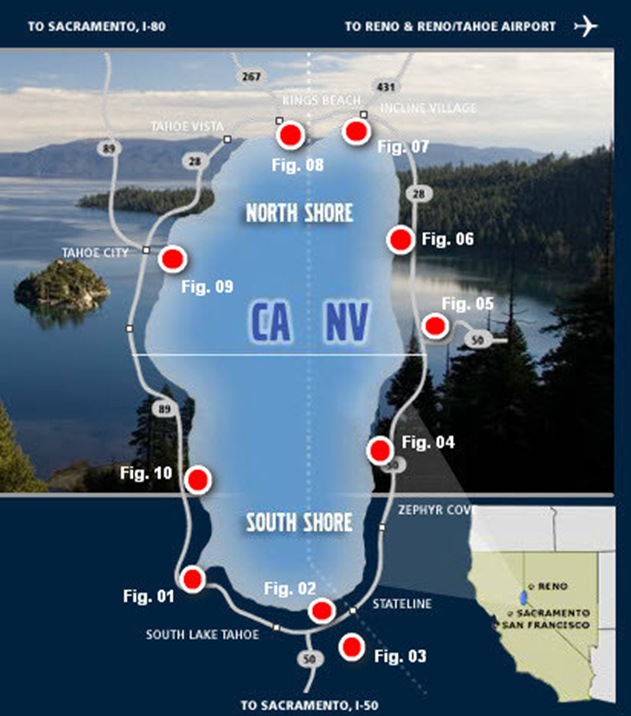{Click on an image to enlarge, then use the back button to return to this page}
This page last updated on 01/10/2018
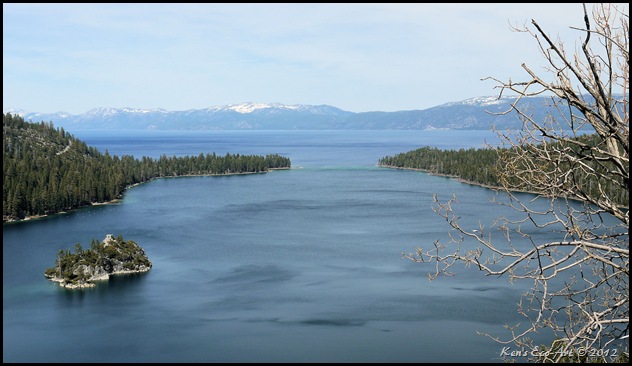 |
| Destination: Lake Tahoe. Distance from Point of Origin: 448 miles. Estimated (One Way) Travel Time: 8-1/2 hours. Directions: From the Stratosphere Casino head northeast on Las Vegas Blvd about 3 miles and turn left onto US-93/95, keeping on the left for 95 North towards Reno.Stay on US 95 for 345 miles and turn left onto Alt US 95 N (Yerington Cutoff) and follow for 24 miles. Turn Left onto NV 339 S which turns into NV 208 and follow for 24 miles. Turn right onto US 395 N for 16 miles. Turn left onto Riverview Dr. for .6 miles. Continue onto Dresslerville Rd. for 1.5 miles. Continue onto NV-756 W/Centerville Ln. for .6 miles. Turn right onto Centerville Ln. for 4.1 miles. Turn right onto NV-206 N/Foothill Rd for 1.3 miles. Turn left onto NV-207 W/Kingsbury Grade Rd. and follow over the mountain for 11.1 miles. Turn left onto US-50 W (Entering California) for 4 miles. General Description: Lake Tahoe is the largest freshwater alpine lake in North America, located high in the Sierra Nevada of the United States. With a surface elevation of 6,225 feet, it is located along the border between California and Nevada, west of Carson City, Nevada. With a depth of 1,645 feet, it is the USA's second-deepest lake. Additionally, with 122,160,280 acre feet of water, it is listed as the 26th largest lake by volume in the world. Because the area surrounding the lake covers two states, it is generally referred to as Lake Tahoe, or simply Tahoe. As you can see from the map below, its most populated areas are referred to as the North Shore and the South Shore. The east (Nevada) side of the lake includes the towns of Stateline, Zephyr Cove and Incline Village. Its west (California) side includes the towns of South Lake Tahoe, Tahoe City, Tahoe Vista and Kings Beach. The lake was formed about 2 million years ago and is a part of the Lake Tahoe Basin with the modern lake being shaped during the ice ages. It is known for the clarity of its water and the panorama of surrounding mountains on all sides. A major tourist attraction, the South Shore is dotted with casinos, skiing resorts, golf courses and summer outdoor recreation. Special Attraction or Points of Interest: There are numerous attractions, hiking and photography moments in and around the Lake Tahoe area. The Heavenly Gondola ride, Cave Rock, Emerald Bay and the GonVikingsholm Castle, Eagle Falls hike, Falling Leaf Falls hike, the Eagle Lake Hike, the Tallac Historic Site, and the Lake Tahoe Cruises, plus a series of Lake Tahoe-Nevada State Parks, just to name a few. Primary Activity: Photography. There is no more beautiful place in the U.S Secondary Activities: Hiking, Biking and Boating and Skiing in the winter months. Elevation: Roughly 6,300 feet. Best Time To Visit: Year-round, depending upon your interests e.g. skiing, biking, hiking, etc. Difficulty: Depends upon your chosen activity. Facilities: Everywhere. Estimated Round-trip Time: 17 hours. Definitely a two-day travel plus whatever time you want to spend site-seeing, hiking, and taking pictures. |
| ||
| General Trip Notes: Because I have a brother, sister and mother, all living in South Lake Tahoe, over the past ten years my numerous trips here to visit family have covered all seasons, spring, summer, fall and winter. In an effort to provide some type of organization to the photographs I have taken here over the past ten years, I have attempted to arrange them according to the map above (Fig. 02); first by state (California or Nevada) and then by the specific location or nearest town. The location of each post is identified on the above map with its corresponding Figure number. Click the hyper-linked titles below to view the posts. Over the years we have taken several drives around the lake with no particular destination in mind, stopping at various scenic turnoffs, just to soak in the beauty. Using individual pictures, collages, diptychs, triptychs, and polyptychs, I have combined many of the pictures taken on these drives into a 'generic' page titled, Lake Tahoe - Drives to Nowhere. (Click to view) | ||
California – South Shore
| ||
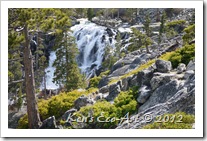 (Fig. 01) Eagle Falls - South Lake Tahoe: Upper Eagle Falls from the turnoff just past the upper falls on Highway 89, also known as Emerald Bay Road. This beautiful waterfall, falls in two large cascades, the upper falls being about 60 feet and the lower falls about 90 feet. (Fig. 01) Eagle Falls - South Lake Tahoe: Upper Eagle Falls from the turnoff just past the upper falls on Highway 89, also known as Emerald Bay Road. This beautiful waterfall, falls in two large cascades, the upper falls being about 60 feet and the lower falls about 90 feet. |
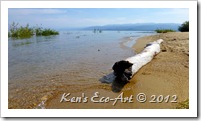 (Fig. 02) Tahoe Keys Marina Trail: There is a relatively short, popular locals’ walking trail that parallels the water’s edge along the east side of the Tahoe Keys Marina, with several branches that weave through the low level marsh lands that lead out to the shoreline of the lake.
(Fig. 02) Tahoe Keys Marina Trail: There is a relatively short, popular locals’ walking trail that parallels the water’s edge along the east side of the Tahoe Keys Marina, with several branches that weave through the low level marsh lands that lead out to the shoreline of the lake.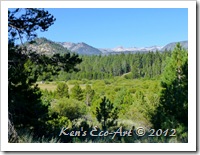 (Fig. 03) Upper Truckee River Trails: This is another popular trail for locals that leads from behind the Barton Memorial Hospital out across a large meadow behind the Hospital that is fed by the Upper Truckee River. On the other side of the meadow and the river, the trail splits off into three trails, with the main trail winding along the river as it leads south towards the Lake Tahoe Airport.
(Fig. 03) Upper Truckee River Trails: This is another popular trail for locals that leads from behind the Barton Memorial Hospital out across a large meadow behind the Hospital that is fed by the Upper Truckee River. On the other side of the meadow and the river, the trail splits off into three trails, with the main trail winding along the river as it leads south towards the Lake Tahoe Airport.
Nevada – South Shore
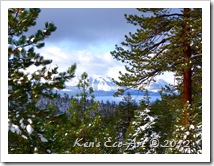 Tahoe Rim Trail - Kingsbury Trailhead: Past Brautovich Park at the end of Andria Drive off of North Benjamin Road near the top of Kingsbury Grade there is a trailhead for the Kingsbury Grade North trail. Between an elevation of 7,780 to 7,860 feet, this relatively easy, short 0.5 mile hike winds through open forests of Jeffrey pine and white fir. Near the end you come to a marked vista spot with a glimpse of South Lake Tahoe. Continuing even further, you are rewarded with some nice views of Castle Rock and the west shore of Lake Tahoe Tahoe Rim Trail - Kingsbury Trailhead: Past Brautovich Park at the end of Andria Drive off of North Benjamin Road near the top of Kingsbury Grade there is a trailhead for the Kingsbury Grade North trail. Between an elevation of 7,780 to 7,860 feet, this relatively easy, short 0.5 mile hike winds through open forests of Jeffrey pine and white fir. Near the end you come to a marked vista spot with a glimpse of South Lake Tahoe. Continuing even further, you are rewarded with some nice views of Castle Rock and the west shore of Lake Tahoe |
Nevada – Eastern Shoreline
Lake Tahoe – Nevada State Park: Lake Tahoe – Nevada State Park is a state park of Nevada on the northeast shores of Lake Tahoe. The park comprises six management units which total 14,301 acres. The primary management units are Cave Rock, Sand Harbor, Spooner Lake, and the Marlette/Hobart Backcountry area.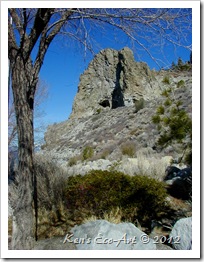 (Fig. 04) Cave Rock: Cave Rock is a small day-use area tucked beneath the rugged volcanic face of Cave Rock along U.S. 50. The entrance is three miles south of Glenbrook, just south of the Cave Rock road tunnels.The site features a boat launch, picnic areas and a small sandy beach. A steep shoreline and rocky shoals make this area a good location for fishing. A small beach located at the south end of the park where park visitors can swim, sunbathe, play in the sand and scuba dive. There are three picnic areas with picnic tables and barbeque pits.
(Fig. 04) Cave Rock: Cave Rock is a small day-use area tucked beneath the rugged volcanic face of Cave Rock along U.S. 50. The entrance is three miles south of Glenbrook, just south of the Cave Rock road tunnels.The site features a boat launch, picnic areas and a small sandy beach. A steep shoreline and rocky shoals make this area a good location for fishing. A small beach located at the south end of the park where park visitors can swim, sunbathe, play in the sand and scuba dive. There are three picnic areas with picnic tables and barbeque pits.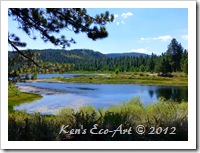 (Fig. 05) Spooner Lake State Park: Spooner Lake is located near the intersection of U.S. Route 50 and Nevada State Route 28 at "Spooner Summit". Spooner Lake is popular for fishing, and viewing wildlife and wildflowers. The Spooner Lake Trail is an easy 2.1 mile loop that circumnavigates Spooner Lake. The trail is mostly flat and well maintained making it perfect for a quick family outing. Views of the Lake and nice groves of Aspens make this a scenic stroll. The site is also the primary starting point for the Marlette/Hobart Backcountry trails as well as the main vehicle entrance to both areas.
(Fig. 05) Spooner Lake State Park: Spooner Lake is located near the intersection of U.S. Route 50 and Nevada State Route 28 at "Spooner Summit". Spooner Lake is popular for fishing, and viewing wildlife and wildflowers. The Spooner Lake Trail is an easy 2.1 mile loop that circumnavigates Spooner Lake. The trail is mostly flat and well maintained making it perfect for a quick family outing. Views of the Lake and nice groves of Aspens make this a scenic stroll. The site is also the primary starting point for the Marlette/Hobart Backcountry trails as well as the main vehicle entrance to both areas.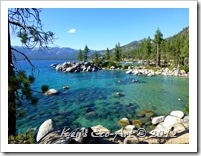 (Fig. 06) Sand Harbor and Sand Point Nature Trail: Home of the Lake Tahoe–Nevada State Park visitor center, Sand Harbor features a large sandy beach on Lake Tahoe's eastern shore. With 55 acres of long sandy beaches, rocky coves, shady forested areas and panoramic lake views, Sand Harbor offers visitors opportunities for bouldering, picnicking, swimming and boating. The one-third-mile Sand Point Nature Trail is a handicap-accessible trail with interpretive signs and breathtaking views of Lake Tahoe.
(Fig. 06) Sand Harbor and Sand Point Nature Trail: Home of the Lake Tahoe–Nevada State Park visitor center, Sand Harbor features a large sandy beach on Lake Tahoe's eastern shore. With 55 acres of long sandy beaches, rocky coves, shady forested areas and panoramic lake views, Sand Harbor offers visitors opportunities for bouldering, picnicking, swimming and boating. The one-third-mile Sand Point Nature Trail is a handicap-accessible trail with interpretive signs and breathtaking views of Lake Tahoe. As I continue to edit and compile more of my photos, and create new blog pages, I will update this page accordingly.

